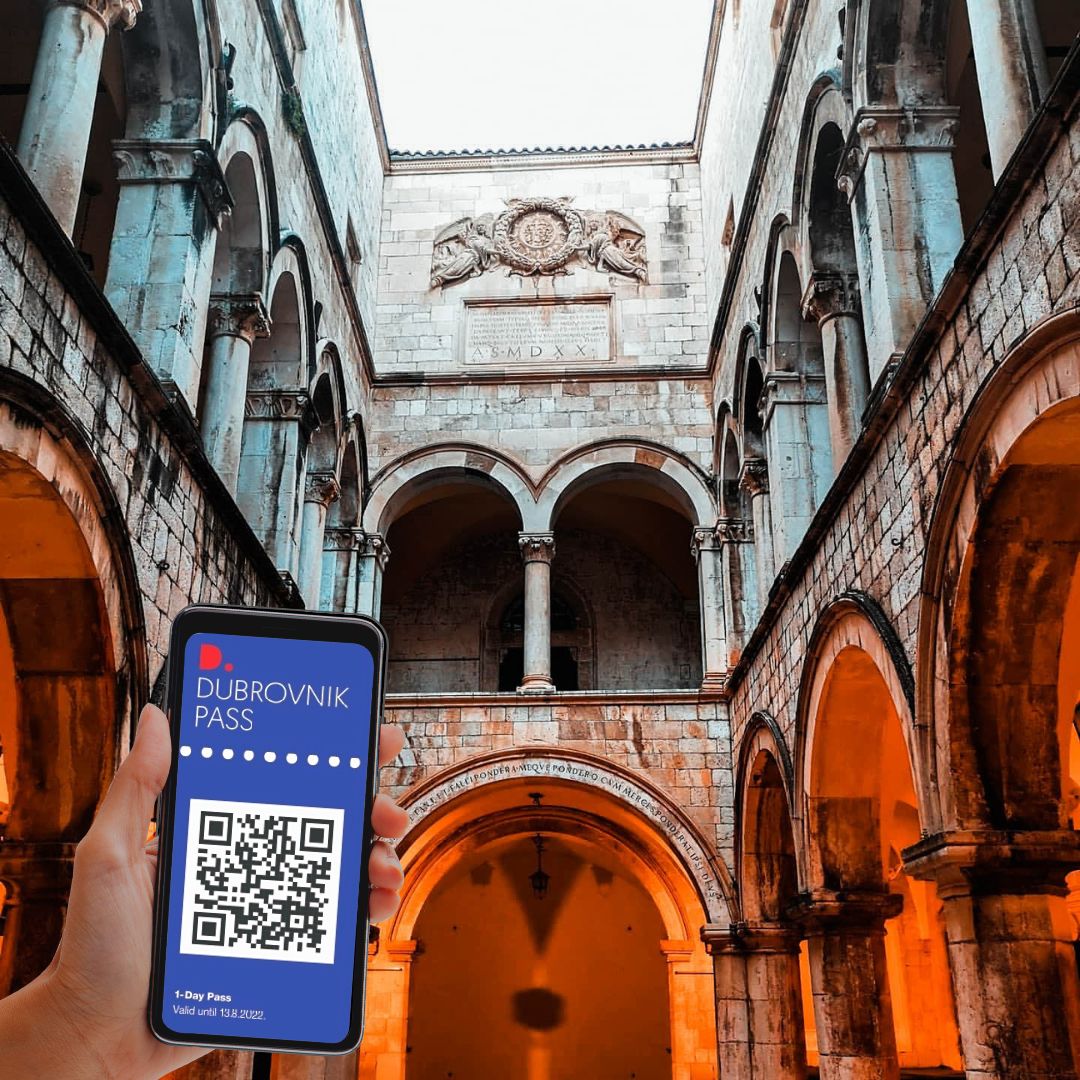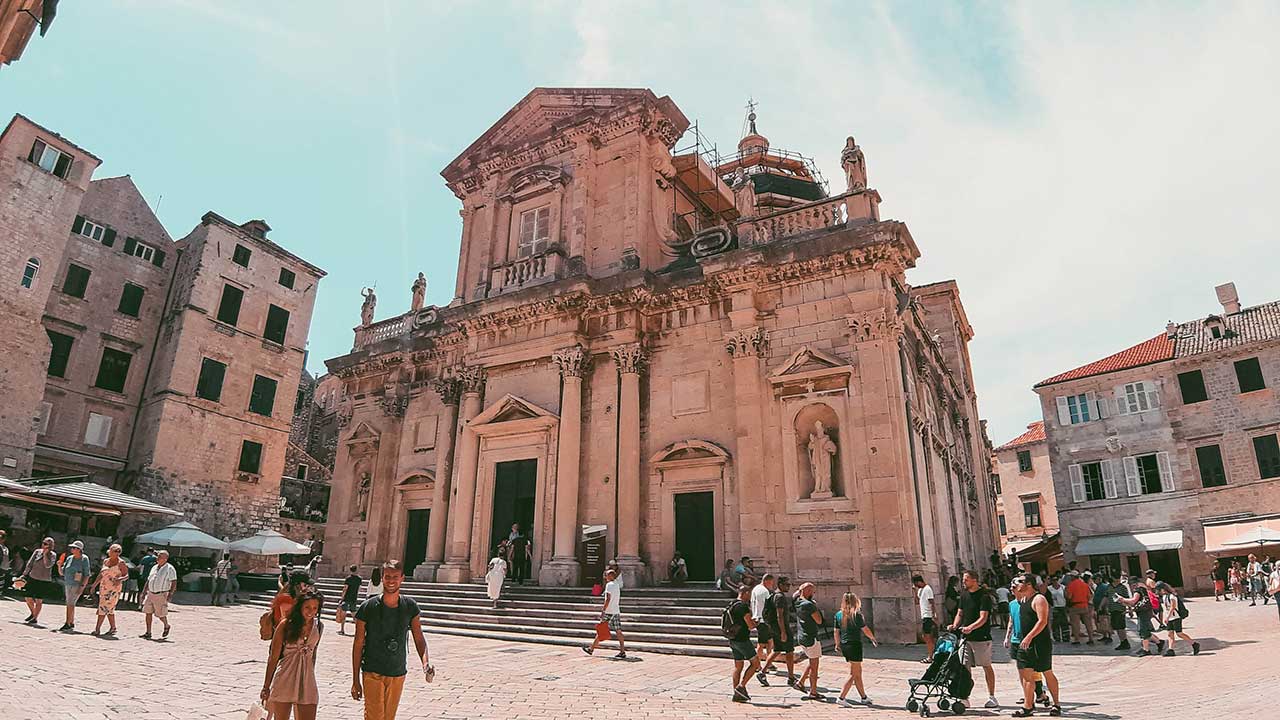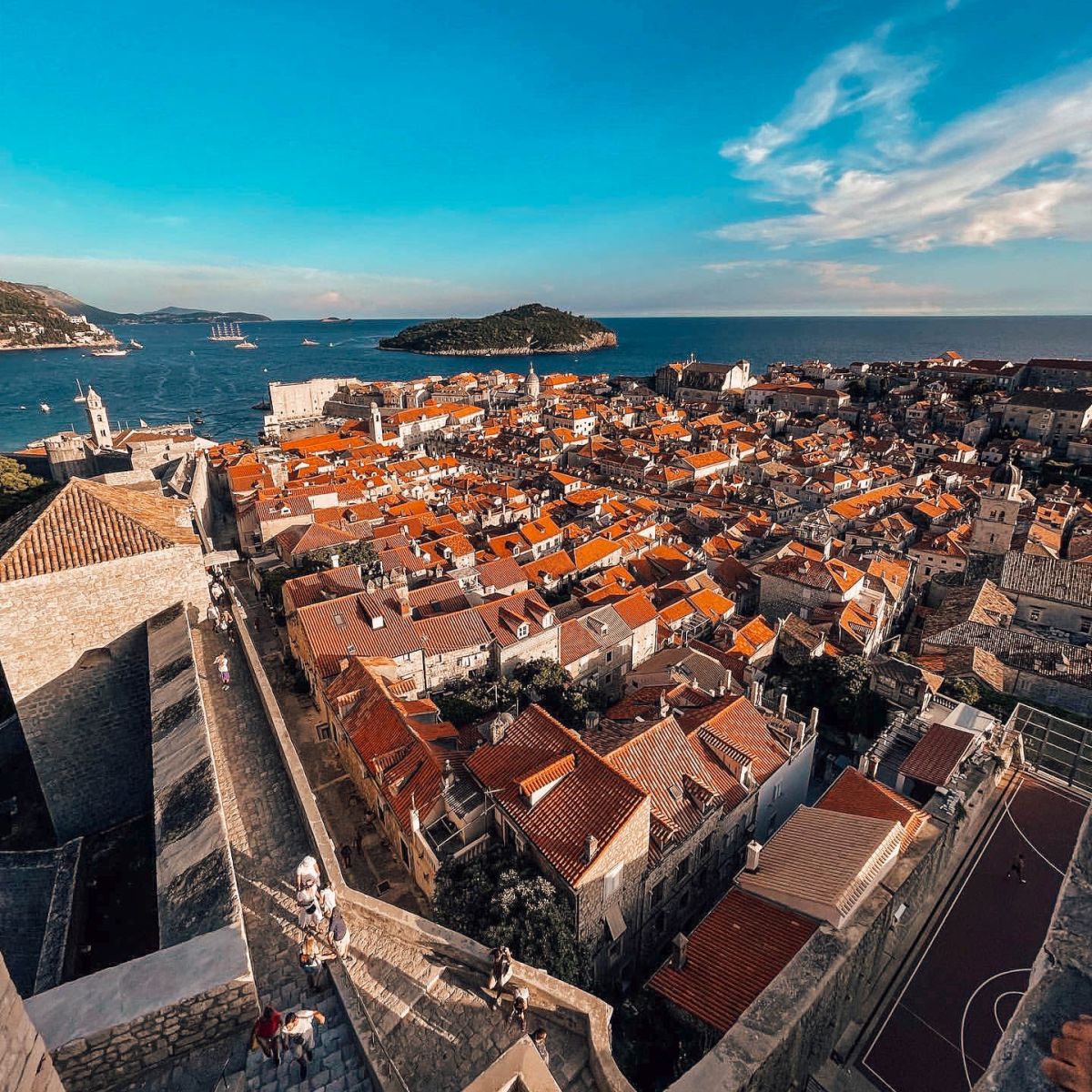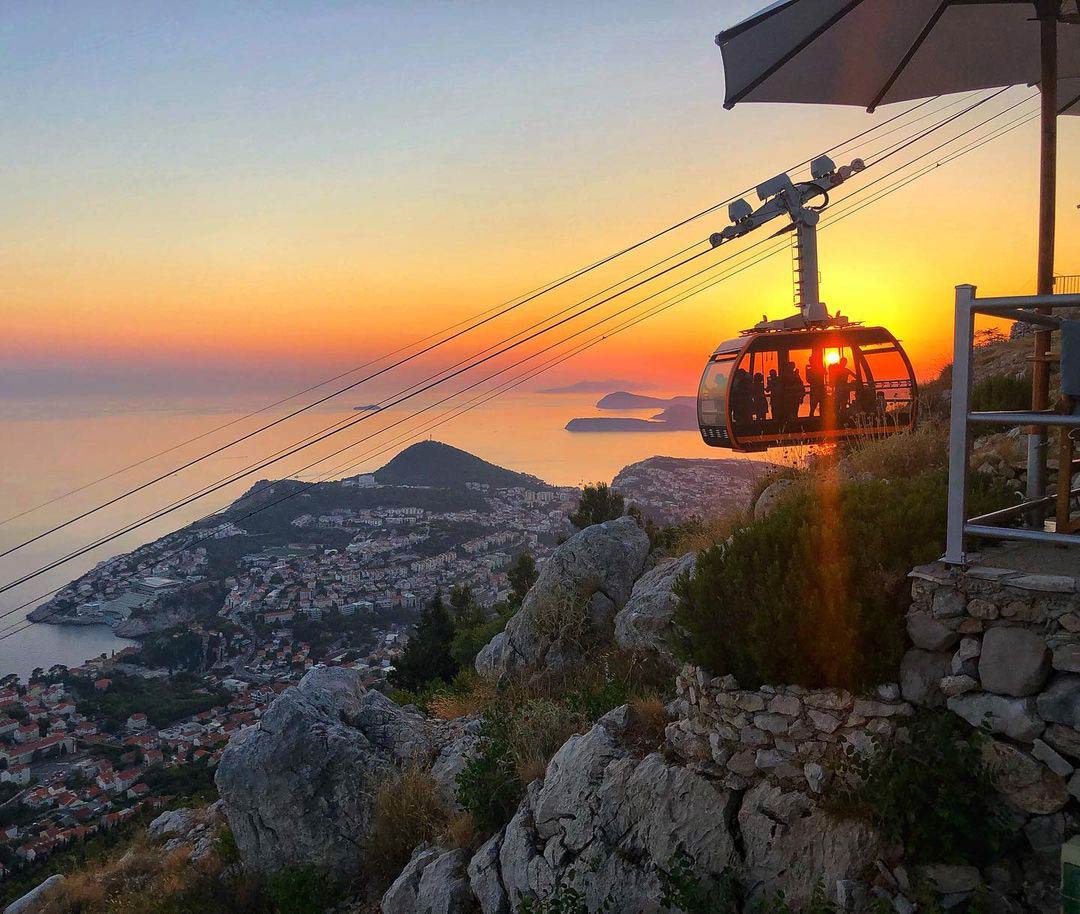The Dubrovnik Pass provides free admission to 12 top attractions in Dubrovnik (e.g., the City Walls, Rectors Palace, and Ethnographic Museum). It also includes free public transport tickets and enables you to skip long ticket-buying lines at the included museums and attractions to save time in Dubrovnik.
Considering the City Walls tickets cost €40, exactly the same as the Daily Dubrovnik Pass, the Dubrovnik Pass is a good value and worth it since it allows you to save money on additional expenses such as bus tickets. However, a Dubrovnik Pass might not be the best deal in everyone’s case, especially if this is not your first visit.
Let’s look at whether the Dubrovnik Pass is right for you, which one to purchase, and how to maximize the value of your Pass.
Types of Dubrovnik Passes?
Dubrovnik Pass is currently sold in three types:
- Daily Pass (1 Day)
- Three-Day Pass
- Seven-Day Pass
Only adult passes are available (anyone seven years or older), as children under seven get free entrance to most attractions in Dubrovnik. So no price discounts for teens and students.
The two decisions you have to make are
- Length of the Pass?
- What attractions do you want to visit?
To decide which Dubrovnik Pass option is a good value for you, choose based on how long you are staying in Dubrovnik and what attractions you want to visit.
The Dubrovnik Pass variants cover almost the same attractions. Only the Seven-Day Pass includes two extra attractions, but they are outside of Dubrovnik.
There are some great special offers and discounts for attractions not covered by the Pass, like the 50% discount on tickets to shows at the Dubrovnik Summer Festival.
Passes are activated after your first usage in an attraction or when you pick up the accompanied bus tickets.
For example, if you purchase a 3-day Dubrovnik Pass on 11 August and visit the City Walls on 13 August, it will be valid from 13 August through 15 August.
Dubrovnik City Pass Price
We try to update this guide with the latest prices, but check the official website for the most recent changes. Here are the Dubrovnik Pass prices for 2025.
| Dubrovnik Pass Type | Price |
|---|---|
| Daily Dubrovnik Pass | €40 |
| Three-Day Dubrovnik Pass | €50 |
| Seven-Day Dubrovnik Pass | €60 |
Price of all Dubrovnik Pass types increased in 2025 by 5 EUR. The main reason for increased prices was the price hike of Dubrovnik Walls tickets. Consequently Dubrovnik Pass got a bit costlier as well.
What Is Included in the Dubrovnik Pass?
The Dubrovnik Pass includes free admission to many popular museums and attractions in Dubrovnik and nearby Cavtat, special offers and discounts when purchasing tickets not covered by the free access, and a set of public transportation tickets to travel throughout the city.
Finally, you can find out more about the Dubrovnik Pass on their official website.
Good to Know
In 2022, the Dubrovnik Tourist board made big changes to the Dubrovnik Pass. Previously it was called the Dubrovnik Card. The name changed to Dubrovnik Pass when it went digital-only product rather than a physical pass card.
What attractions does Dubrovnik Pass cover?
Attractions that are included depend on the type you choose. The Seven Day Dubrovnik Pass holders are granted free admission to 12 museums and attractions in and around Dubrovnik. The following attractions are included in all three types of Dubrovnik Pass.
- Dubrovnik City Walls
- Cultural History Museum, Rector’s Palace
- Friars Minor Franciscan Monastery Museum
- Maritime Museum
- Ethnographic Museum
- Museum of Modern Art Dubrovnik
- Marin Držić House
- Dubrovnik Natural History Museum
- Dulčić Masle Pulitika Gallery
- Atelier Pulitika Studio
- Archaeological Exhibitions
- Bukovac House
- Konavle County Museum
City Walls
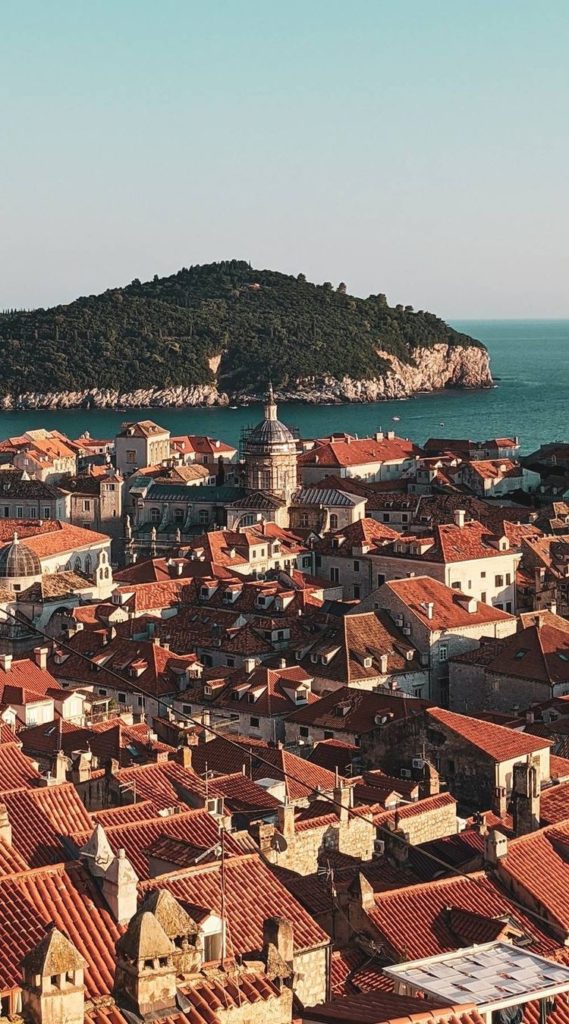
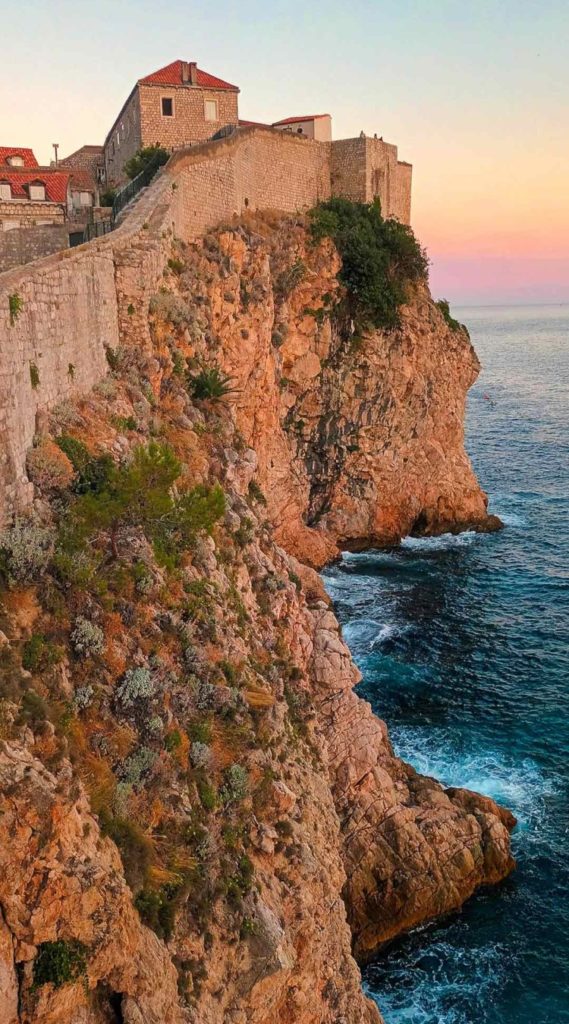
Walking along Dubrovnik’s city wallsis the best way to start your tour of the Old Town. The finest panoramas are from the wall section above the sea, overlooking the red-tiled roofs and the sea. This attraction is the main reason travelers buy the Dubrovnik Pass.
Construction of the initial parts of the walls began as early as the 8th century, and work continued throughout centuries to the end of the 16th century.
Interesting
The City Walls run for about two kilometers (1,940 m), and the walk around the walls will take 1.5-2 hours, depending on your walking pace and the size of the crowds. Visitors walk anticlockwise around the walls.
The walls feature five forts. The Minčeta Tower (built semicircular in response to the invention of cannons) is in the northwest, the Revelin Fort at the eastern Ploče Gate, St. John by the harbor entrance, and the Bokar in the southwest.
Perched on a nearby rock Fort Lovrijenac is considered part of the walls even though it’s detached. The entrance fee for the Lovrjenac fortress is included in the Dubrovnik Pass but can be bought separately at 15EUR.
Tip
In summer, the wall can be very crowded; arrive early in the morning if you wish to avoid the chaos.
The main admission points to the Dubrovnik City Walls are at Stradun main street when reached from the western Pile Gate entrance to the Old Town. The second entrance is next to the Dominican monastery at Ploče Gate. The third entrance is at St. John Fort.
| Date | Open Hours |
|---|---|
| 1 January – 28 February | 10:00 – 15:00 |
| 1 March – 31 March | 09:00 – 15:00 |
| 1 April – 31 May | 09:00 – 18:30 |
| 1 June – 31 July | 08:00 – 19:30 |
| 1 August – 15 September | 08:00 – 19:00 |
| 15 September – 31 October | 09:00 – 18:00 |
| 1 November – 31 December | 09:00 – 15:00 |
| City Walls Working Hours |
Cultural History Museum, Rector’s Palace
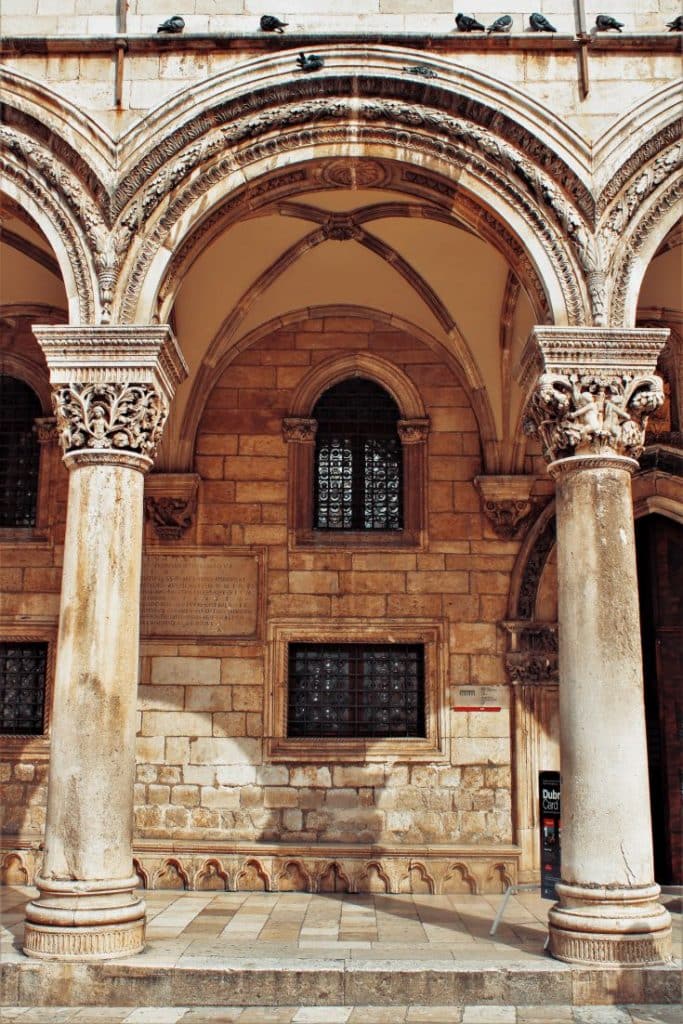
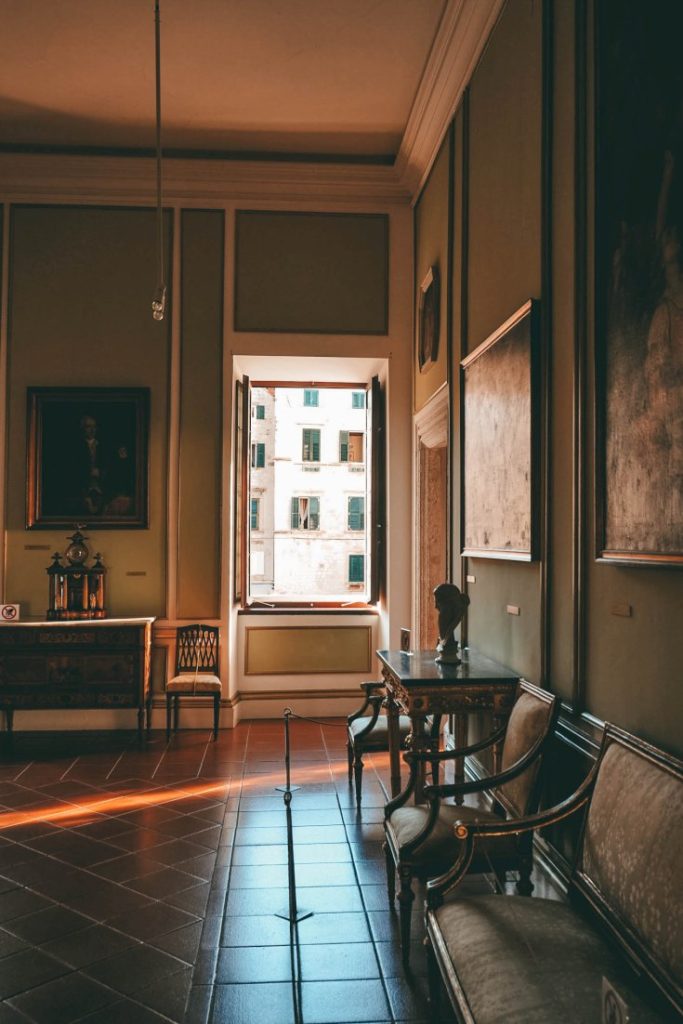
The majestic Rector’s Palace should be on your list to visit whether you bought Dubrovnik Pass or not. It was the seat of the Dubrovnik Republic government and the rector’s residence, the man with the highest administrative function in the country. Read more on what we think about the Cultural History Museum.
The building was first mentioned in sources in 1272 as a fortified castle (castellum) from which the city was governed.
During the centuries, it lost its defensive character and was transformed into a representative palace, called palatium or palazzo maggior, in historical sources.
It had two floors with a porch and towers. It housed the most important state political bodies - the Rector, the Great Council, the Small Council, and the Council of the Pleas (Senate). In addition, it housed numerous offices, a prison, and a weapons store.
Interesting
Each rector held office for only one month and spent all that time in the palace, which he couldn’t leave except on official duty. This was to implemented to prevent rectors grabbing too much power.
Today, the Palace houses the cultural and historical department of the Dubrovnik Museums, where portraits of famous Dubrovnik residents (Getaldić, Gundulić, Bošković, among others), keys to the city gates, objects from the old city pharmacy Domus Christi, etc. are exhibited.
| Date | Open Hours |
|---|---|
| 3 November – 21 March | 09:00 – 16:00, closed on Wednesdays |
| 22 March – 2 November | 09:00 – 18:00 |
| Cultural History Museum Working Hours |
Friars Minor Franciscan Monastery Museum
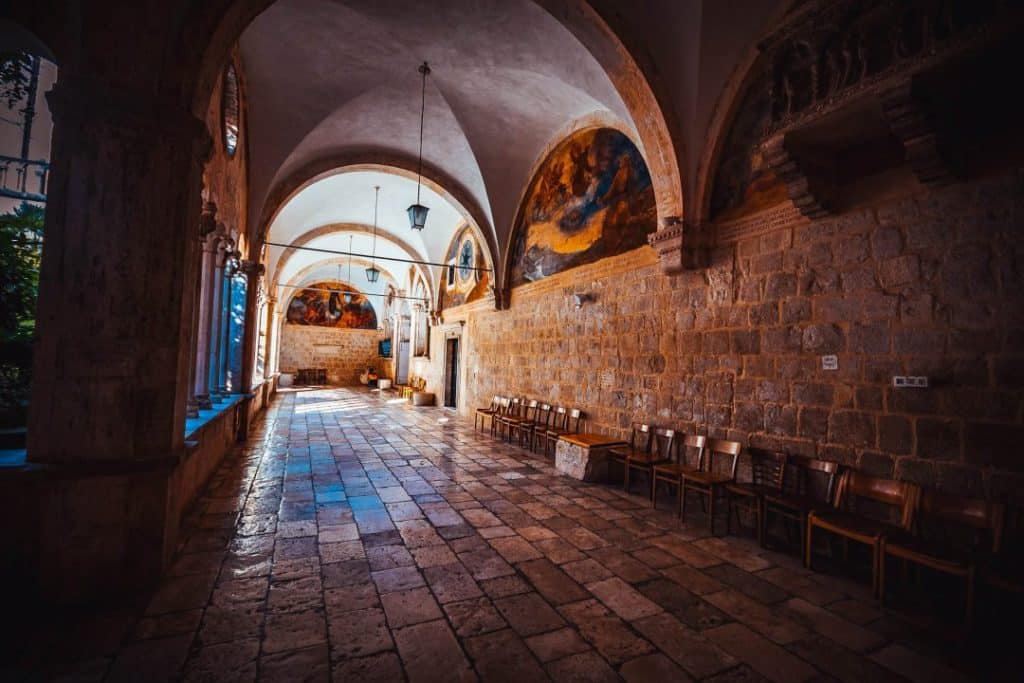
Another interesting place Dubrovnik Pass includes is the Friars Minor Franciscan Monastery Museum. An exceptional library, a 14th-century abbey, an old pharmacy, a unique collection of relics, and a museum housing relics and liturgical objects can be found here.
Over 20,000 books are stored in the library, among them 137 incunabula (books printed before the year 1501 in Europe).
Interesting
In terms of continuous service, the Small Friar’s Pharmacy is one of the oldest pharmacies in Europe.
Consequently, the pharmacy houses one of the most valuable pharmacology and medicine literature collections, including over 2,000 prescriptions, furniture, and equipment dating back to the 15th century.
Also on display, you can see invaluable manuscripts and chorales, paintings done by unknown masters, and a 14th-century reliquary housing St. Ursula’s head.
The wealth and beauty of the church’s original appearance are evidenced by the southern portal with a Gothic architrave, where the touching Pietà catches the eye in its beauty. The sculpture of the Virgin holding her son in her lap is a masterful work of stonemasons from Dubrovnik, the brothers Leonard and Peter Petrović, who made it in 1498.
| Date | Open Hours |
|---|---|
| 3 November – 21 March | 09:00 – 14:00 |
| 22 March – 2 November | 09:00 – 18:00 |
| Franciscan Monastery Working Hours |
Maritime Museum
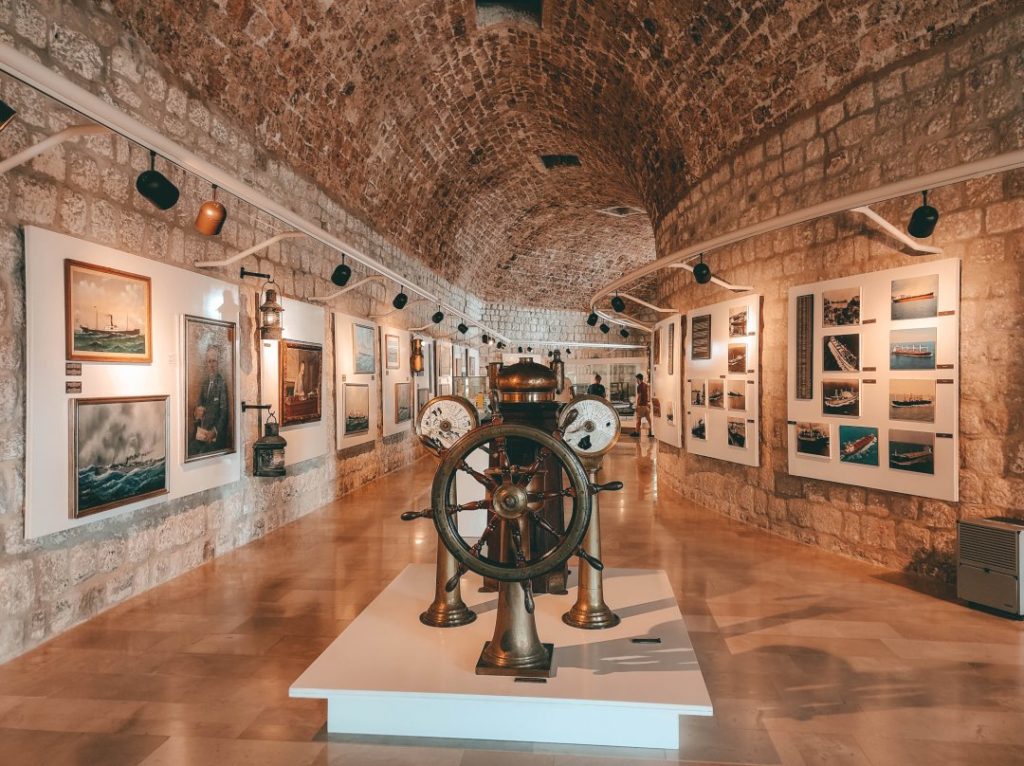
You can show your Dubrovnik Pass to enter the Maritime Museum located on the first and second floors of St. John Fortress. The museum houses objects, paintings, and documents related to the long history of local maritime trade.
Good for history buffs
Dubrovnik’s maritime tradition has left behind many atlases, maps, navigational instruments, and other valuable marine items that can be seen in the museum. Maritime Museum displays the development of Dubrovnik’s trade in the Adriatic, Mediterranean, and beyond during the rise of the Republic.
Over five thousand objects classified into fifteen collections and exhibits offer insights into why Dubrovnik was so successful as a merchant republic and how it became as powerful as Venice and other European maritime powers during its glorious days.
| Date | Open Hours |
|---|---|
| 3 November – 21 March | 09:00 – 16:00 |
| 22 March – 2 November | 09:00 – 18:00 |
| Maritime Museum Working Hours |
Ethnographic Museum
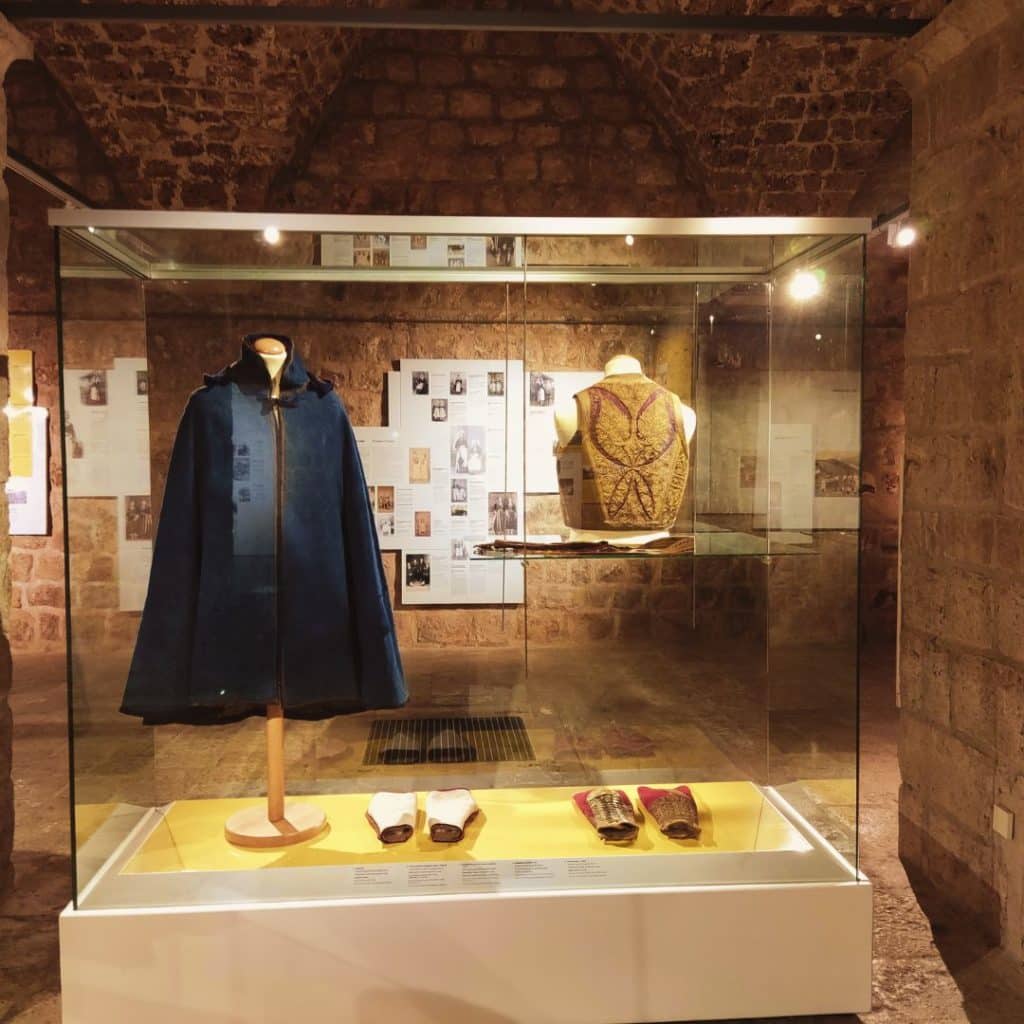
Dubrovnik Pass will give you access to the Rupe Ethnographic Museum. It is set up in the former grain cellars of the old granary, which still preserves the vaults (visible but not open to the public).
It has an excellent collection that features photos of local cultural activities and snippets of agriculture and clothing from bygone eras, providing a great overview of Croatian “folk” culture.
Interesting
The granary got its name from the deep holes (rupe in Croatian) carved into the stone used as silos for grain storage. Dubrovnik was the only European city that stored grain in underground silos. It had 15 holes that could hold up to 1,500 tons of grain.
The museum’s permanent exhibition consists of six thousand five hundred objects from the Dubrovnik region’s ethnographic heritage and traditional culture. On the first floor are agricultural and trade cultures. On the second floor are cultural heritage exhibits: folk costumes, textiles, folklore, lace, and displays showing customs.
Besides two floors of displays, there is a fantastic view of Old Town rooftops from the top of the stairs on the second floor.
| Date | Open Hours |
|---|---|
| 3 November – 21 March | 09:00 – 16:00 |
| 22 March – 2 November | 09:00 – 18:00 |
| Ethnographic Museum Working Hours |
Museum of Modern Art Dubrovnik
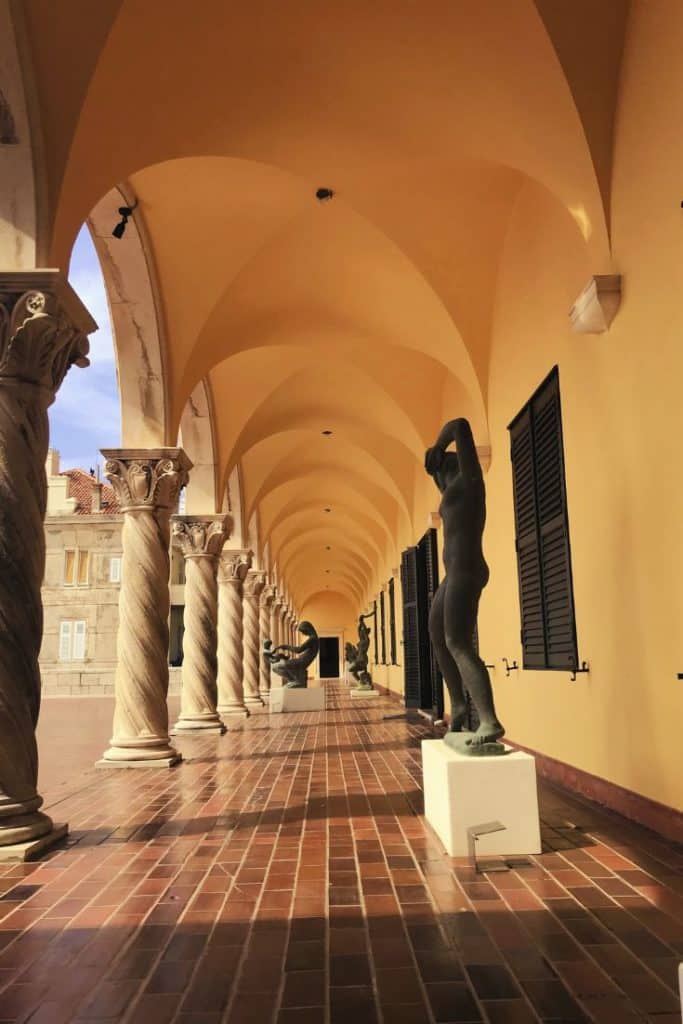
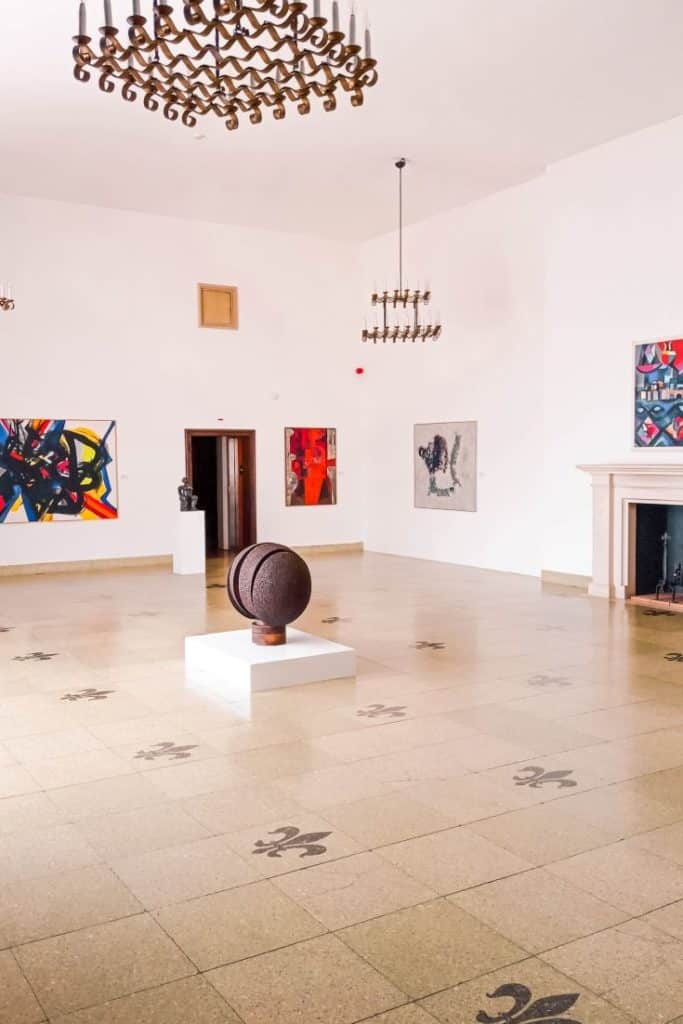
If you are a modern art enthusiast, you will love to know that the Pass covers entrance tickets to the Museum of Modern Art in Dubrovnik. It was opened to the public in 1945 and is located in a beautiful palace that was historically a summer residence of a wealthy Dubrovnik shipbuilder.
It is designed to resemble the Gothic and Renaissance examples of Dubrovnik architecture, like the Rector’s Palace.
The museum is large and divided into an outdoor and indoor exhibition area. If you are a lover of modern art, this museum could be an extra incentive to buy the Dubrovnik Pass, with which you can get a free visit to its constantly changing exhibitions.
The museum’s collection of modern art covers the visual production created from the end of the 19th to the beginning of the 20th century. Artists represented here hold some connection to the Dubrovnik region, especially those whose art value and fame far outgrew their regional relevance.
| Date | Open Hours |
|---|---|
| 1 January – 31 December | 09:00 – 20:00 |
| Museum of Modern Art Working Hours |
Marin Držić House
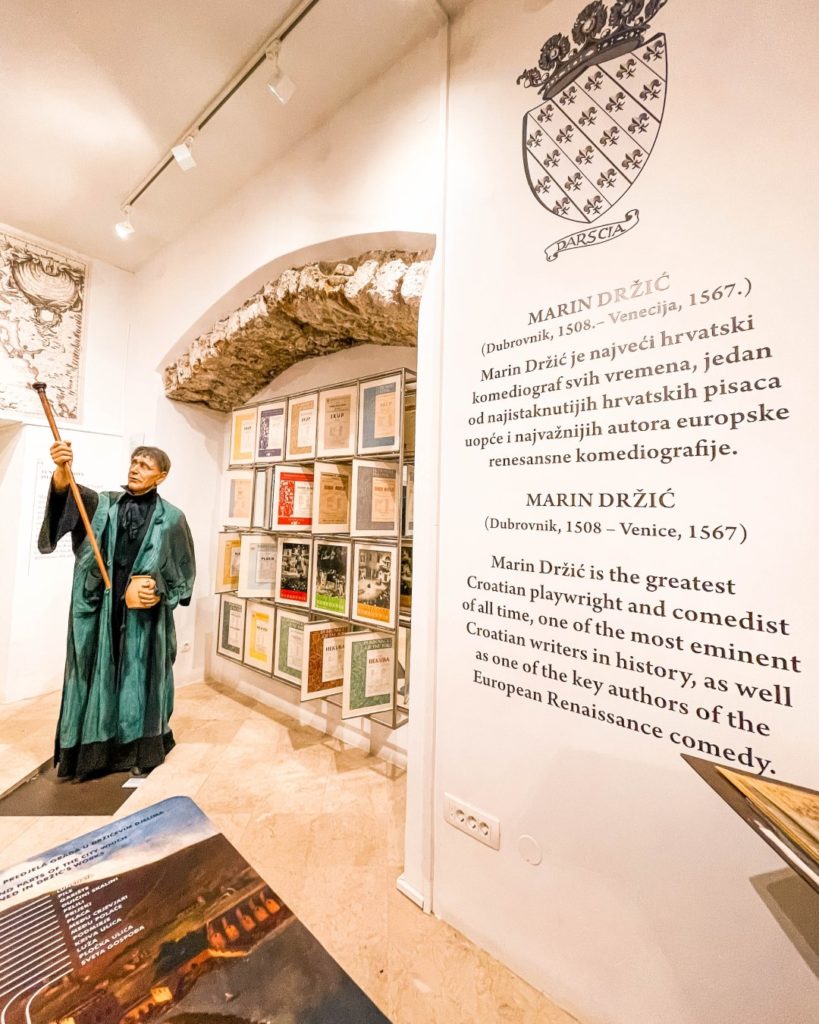
One of the smaller museums included in the Dubrovnik Pass is The House of Marin Držić. It is a personal museum founded in 1989 and dedicated to the local playwright and poet Marin Držić. Držić is considered one of the most prominent Croatian and Dubrovnik writers of the Renaissance.
Good to Know
Držić was born and lived in the 16th century, and unfortunately, no authentic objects of his are preserved and used in the museum. Instead, Marin Držić’s house is a theater museum in which the museum fund contains theater props, scenography, costume design, and conceptual art.
The collections represent materials and props from theatrical performances based on Držić’s works held in Croatia and abroad. The exhibition includes dolls, costumes, portraits, posters, programs, and photographs. Visitors can hear Držić’s biography through an audio guide.
| Date | Open Hours |
|---|---|
| 1 January – 31 December | 09:00 – 20:30 |
| Marin Držić House Working Hours |
Dubrovnik Natural History Museum
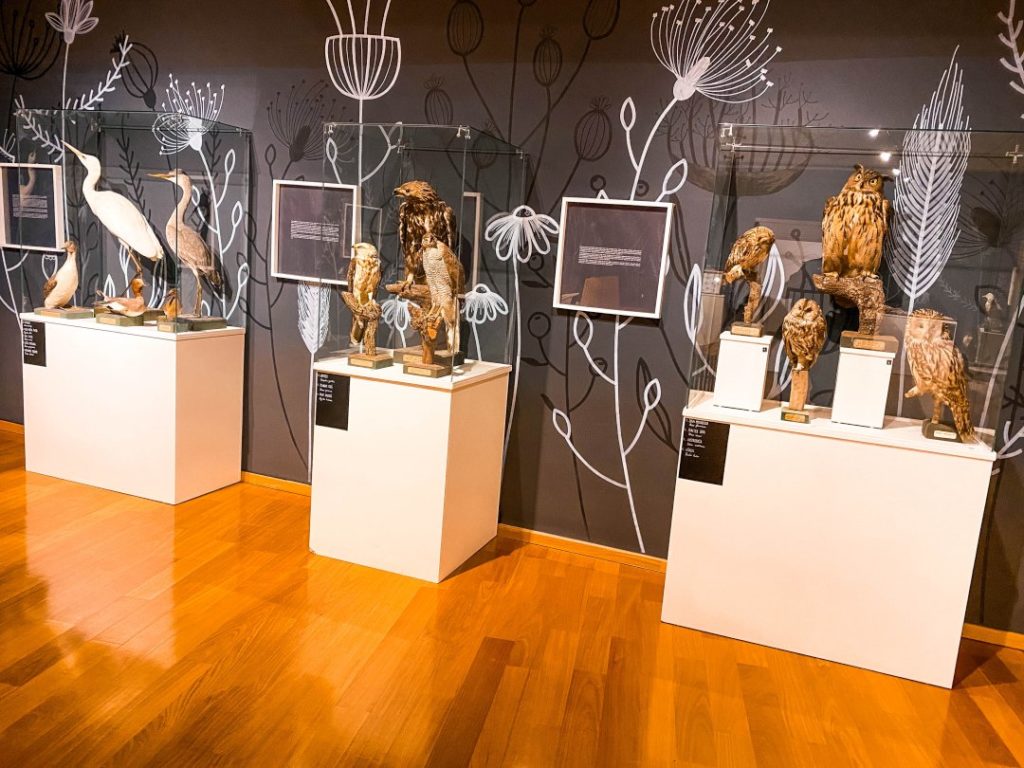
The Natural History Museum in Dubrovnik was created from the Dubrovnik Native Museum (Museo Patrio), founded in 1872 from the private collection of pharmacist and ship owner Antun Dropac.
It is a very interesting museum with a really innovative design. The museum is very quiet, unlike other places with too many tourists.
Tip
The number of exhibits is fairly small, but the quality, on the other hand, is fantastic. You should be done with it in 30-60 mins (depending on your appreciation of the informational texts accompanying the exhibits).
If you are interested in stuffed animal species such as insects, birds, sharks, turtles, and dolphins, Dubrovnik Pass includes free admission and this is the place for you. Otherwise, you can skip this one.
It contains ten collections: mollusks, minerals, ores, seaweed, fossils, birds, crustaceans, marine animals, fish, mammals, amphibians, and reptiles.
| Date | Open Hours |
|---|---|
| 1 January – 31 December | 10:00 – 18:30, closed on Sundays. |
| Natural History Museum Working Hours |
Dulčić Masle Pulitika Gallery
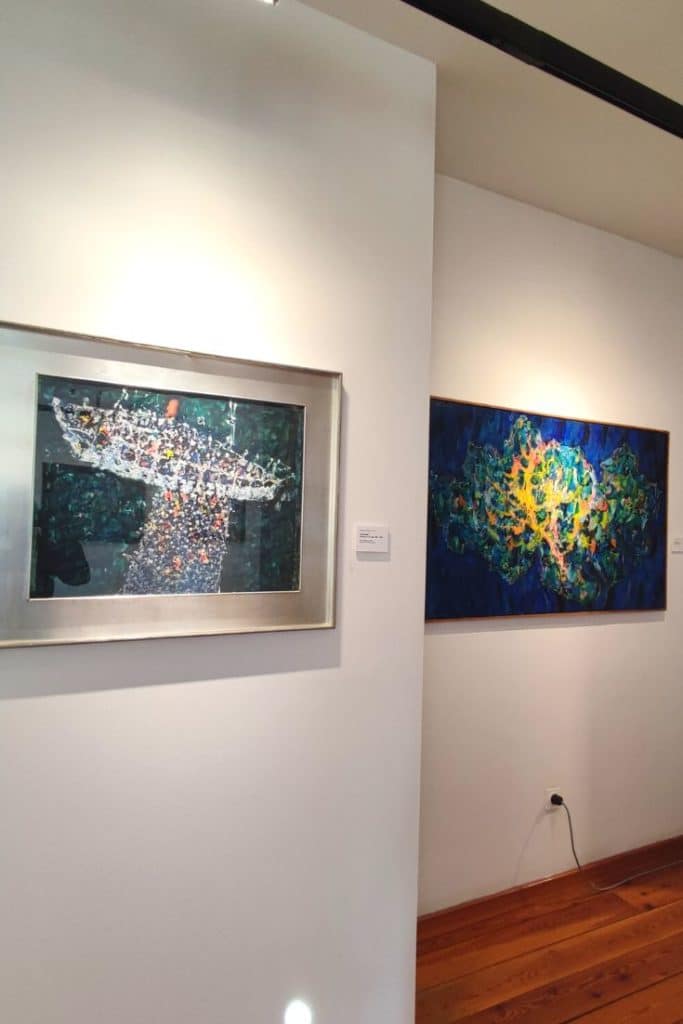
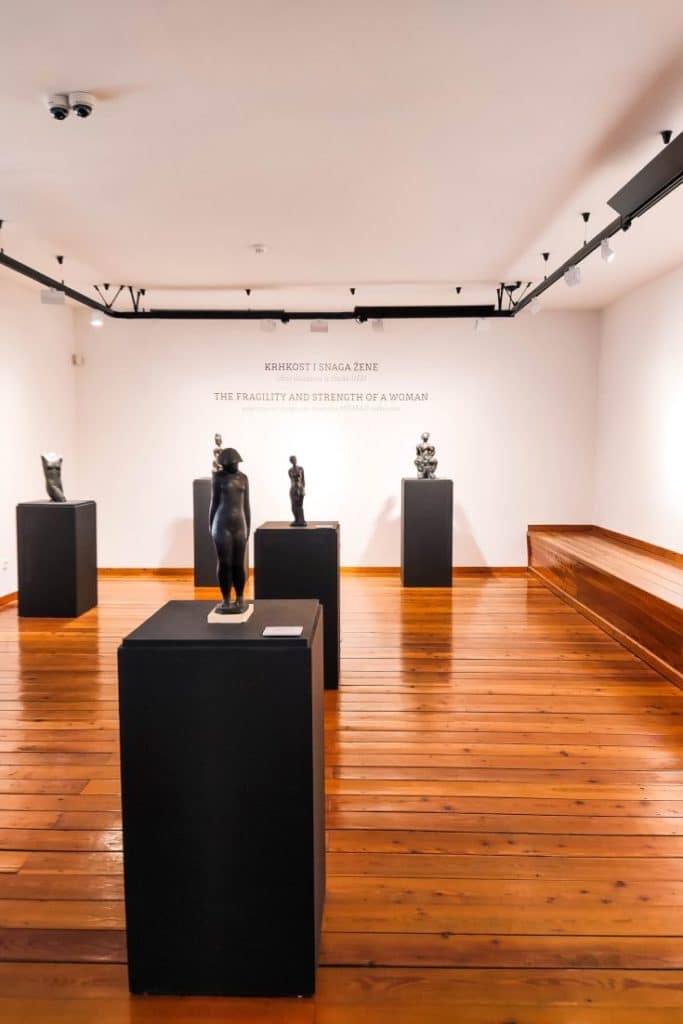
Dulčić Masle Pulitika Gallery is a small but very interesting gallery included in the DuPass with paintings covering two floors. It was named after the most prominent artists to have appeared in Dubrovnik in modern times.
The trio’s permanent collection features on the lower floor, while the upper gallery is given over to temporary exhibitions by contemporary artists.
The ground floor of this gallery pays a homage to US Secretary of Commerce Ronald Brown, who was killed by a plane crash near Dubrovnik in 1996.
| Date | Open Hours |
|---|---|
| 1 January – 31 December | 10:00 – 20:00. |
| Dulčić Masle Pulitika Gallery Working hours |
Atelier Pulitika Studio
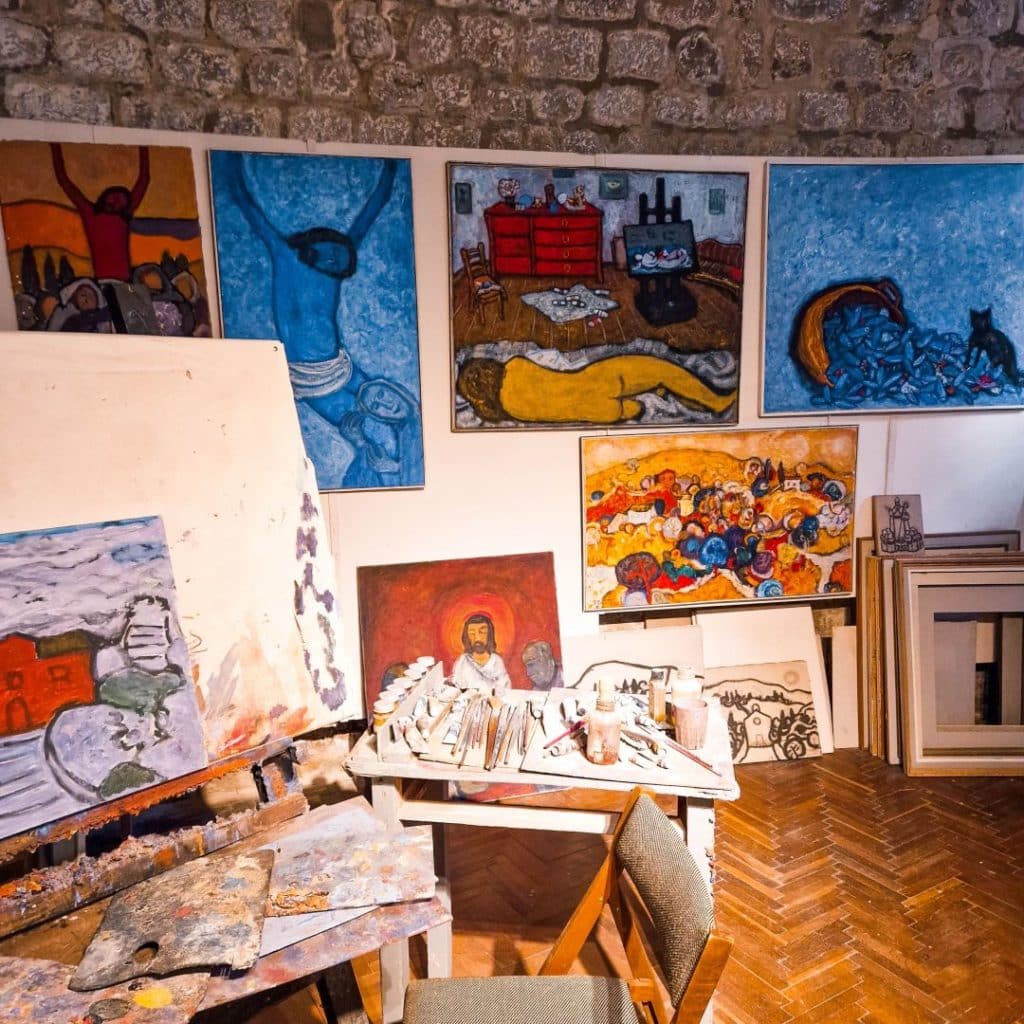
Next door to the Maritime Museum in St. John Fort is the Atelier Pulitika Studio, formerly a private studio owned by Đuro Pulitika, one of Croatia’s most famous contemporary artists, converted into an exhibition gallery after the artist’s death in 2006.
During his lifetime, he would have produced the paintings shown in the front gallery at the rear of his workspace, which is located at the back. The larger front room often hosts exhibitions by local artists.
| Date | Open Hours |
|---|---|
| 1 January – 31 December | 09:00 – 15:00. |
| Atelier Pulitika Studio Working hours |
Archaeological Exhibitions
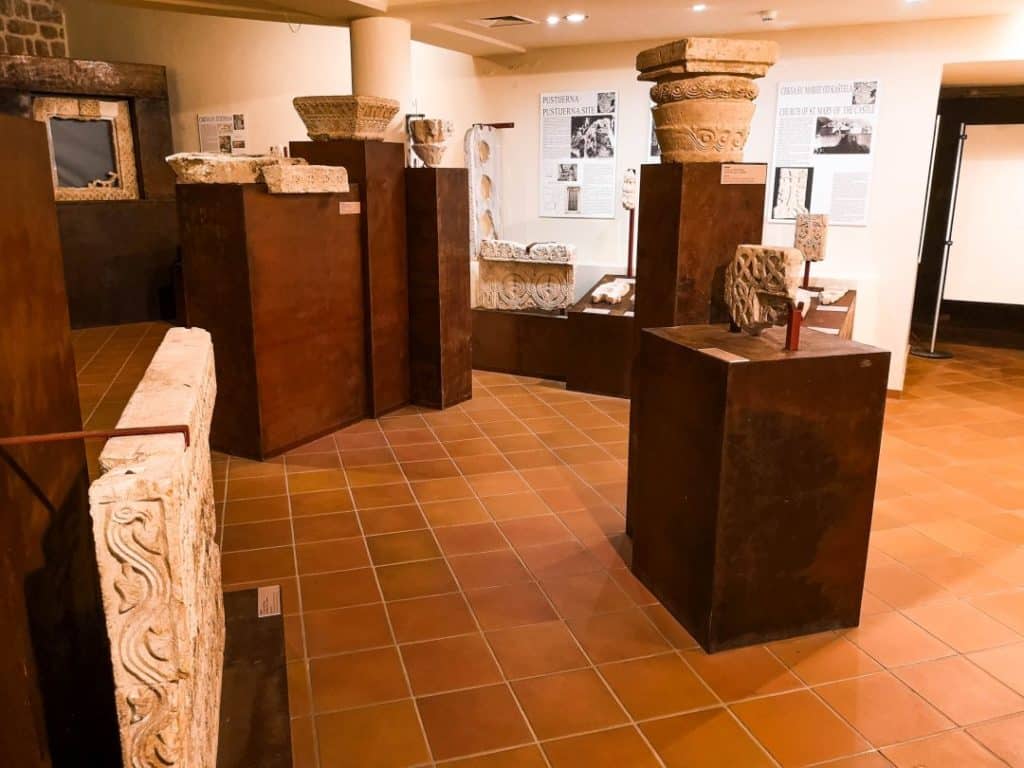
If walking the streets of Old Town is not enough for your inner architectural history admirer, you can show your DuPass QR code to gain entrance to the Archaeological Museum.
The Archaeological Museum in Dubrovnik has no permanent space or exhibition, so the museum presents the rich archaeological history of the Dubrovnik area and moves around various attractions. Currently, it is temporarily exhibited on the ground floor of Revelin Fortress.
The museum is currently divided into several collections. The first is an early medieval sculpture exhibition from the Archaeological Museum featuring columns, capitals, portals, windows, and traditional carved stone elements. The second is a display of braid ornaments, plait-work (pleter) with floral motifs from the early medieval collection.
| Date | Open Hours |
|---|---|
| 1 January – 31 December | 10:00 – 16:00. |
| Archaeological Exhibitions Working Hours |
Bukovac House
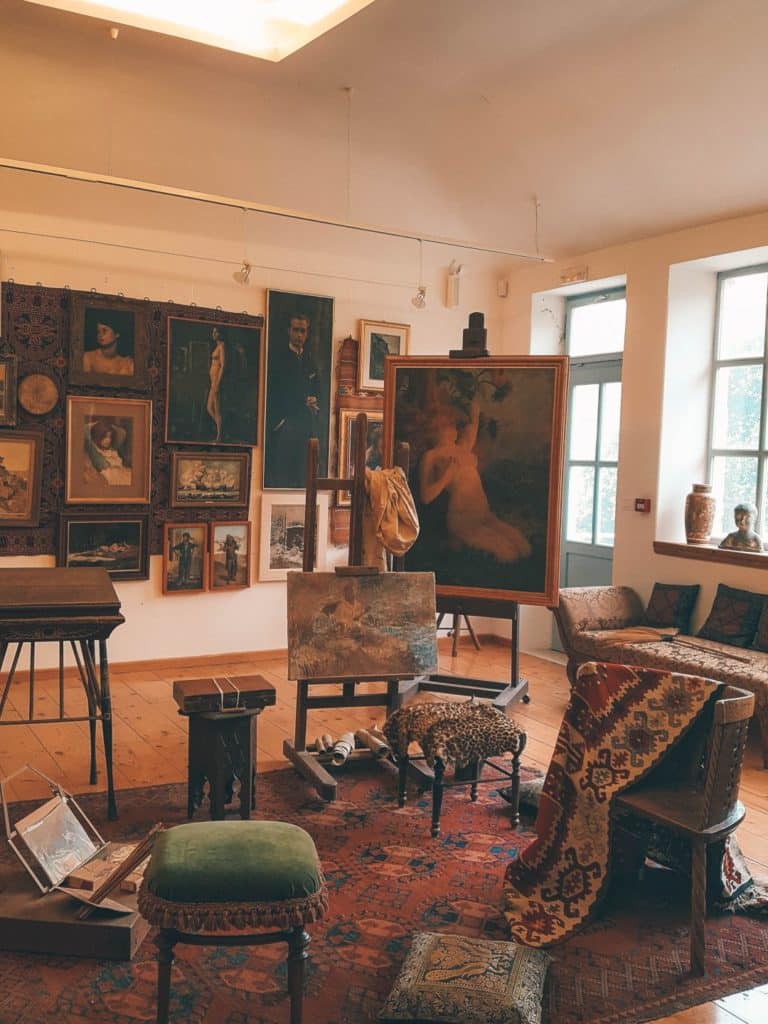
A beautiful gallery of Vlaho Bukovac’s life and work has been created in the artist’s former home (1855-1922). Family portraits and oil paintings from Paris, Zagreb, Prague, and Cavtat adorn the two floors of his home.
The house is surrounded by beautiful gardens decorated with murals Bukovac painted as a youth. Besides the period furniture and items on display, there are also some of the painters’ interesting personal items you can browse through.
| Date | Open Hours |
|---|---|
| 1 January – 31 December | 09:00 – 19:00, Sunday: 9:00 - 14:00 |
| Bukovac House Working Hours |
Konavle County Museum
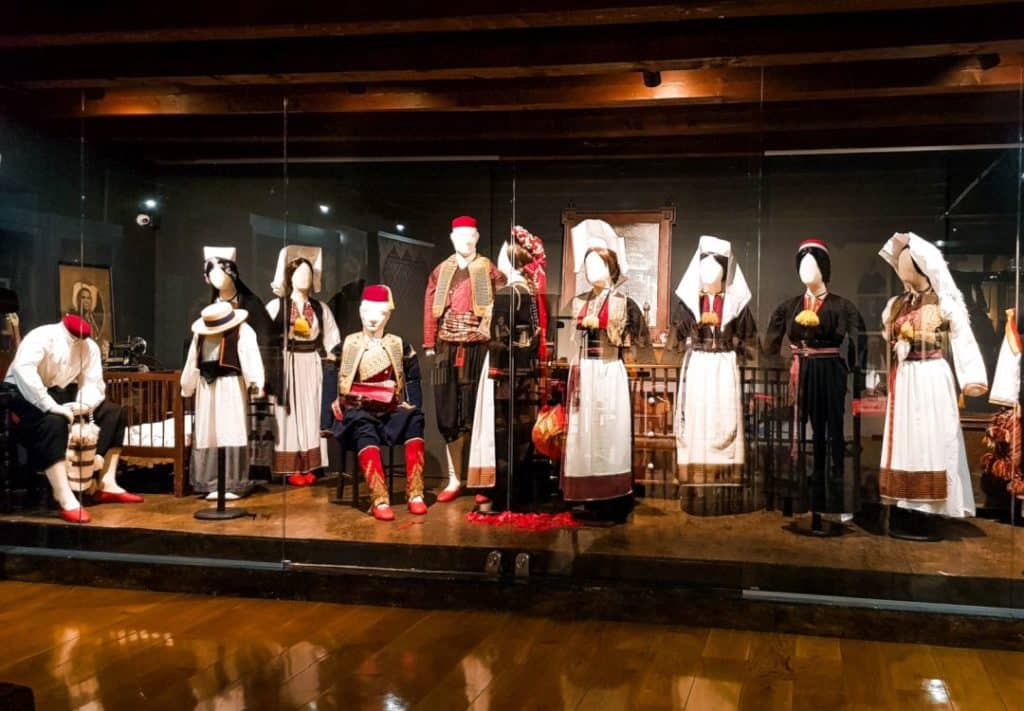
The Konavle County Museum is located in the center of Čilip in a large stone house built in 1909 for the needs of public affairs of the village savings bank and the cultural center.
Until the Homeland War in 1991, the museum was arranged like a typical Konavle house with furniture, household items, a hearth, and exhibits of men’s and women’s folk costumes, as well as embroidery and weaving. The largest part of the exhibits was collected with gifts from the resident population of Konavle.
Interesting
During the Homeland War, the museum building was burned to the ground, and part of the inventory was irretrievably lost. The museum was renovated in 2007.
Rescued museum objects are today represented in a high-quality permanent exhibition of folk costumes and textile handicrafts of Konavle. Exhibits of the Cavtat Embroidery Association complement them.
The ethnographic collection of the museum numbers close to 700 objects - the preserved pre-war fund and objects purchased and donated to the Museum in the post-war period.
Women’s and men’s folk costumes, embroideries and other textile handicrafts, jewelry, weapons, musical instruments, artistic paintings, photographs, and various useful items are on display.
| Date | Open Hours |
|---|---|
| 1 January – 31 December | 09:00 – 19:00, Sunday: 9:00 - 14:00 |
| Konavle County Museum Working Hours |
Culture and Heritage Pass Discounts
| Attractions | 1-Day Pass | 3-Day Pass | 7-Day Pass |
|---|---|---|---|
| Dubrovnik Summer Festival | 10% | 30% | 50% |
| Folk Ensemble Lindo | 10% | 10% | 10% |
| Dubrovnik Symphony Orchestra | 10% | 10% | 10% |
| Čilipi Folklore | 12.5% | 12.5% | 12.5% |
| Lazareti | 50% | 50% | 50% |
| Rector’s Palace Slano | €3 | €3 | €3 |
| Heritage House Dubrovačko Primorje | €3 | €3 | €3 |
| Ston Walls | €8 (March – October) / €5 (November – February) | €8 (March – October) / €5 (November – February) | €8 (March – October) / €5 (November – February) |
| Sokol Fortress in Konavle | €8 (March – October) / €5 (November – February) | €8 (March – October) / €5 (November – February) | €8 (March – October) / €5 (November – February) |
| Lokrum Nature Reserve | NONE | 20% | 30% |
| Račić Family Mausoleum | NONE | 30% | 30% |
| Mljet National Park | NONE | NONE | 30% |
| Love Stories Museum | 20% | 20% | 20% |
| Red History Museum | 20% | 20% | 20% |
Note that several popular attractions in Dubrovnik are NOT currently included with the Dubrovnik Pass that you should consider, like Cable Car, Lokrum Island, Love Stories Museum, Red History Museum, War Photo Limited, and Homeland War Museum.
There are also many excellent free important buildings and attractions, such as the Sponza palace, the Cathedral, Saint Blaise Chruch, and Dominican Monastery, that travelers should not forget.
What Transportation Options are Included with the Dubrovnik Pass?
All Dubrovnik Pass variants come with the included use of public transport in Dubrovnik. This means exclusively using Libertas busses that cover the whole of the city since Dubrovnik has no trams or trains. Also, no boats are included (if you were wondering if you can use the Pass to go to the nearby Lokrum Island).
Tip
To get your ticket, you must simply show your Dubrovnik Pass to the bus ticket seller at the Libertas Dubrovnik public transport company sale points at Pile, Lapad, Mokošica, and Grawe.
Alternatively, you can show your Pass QR code to a bus driver, who will scan and print out a physical bus day ticket, or they will wave you through.
One Day Dubrovnik Passes offer 24-hour access to public transportation (the bus card is valid from the moment of initial activation of the bus, and cardholders can use it for the next 24 hours).
The Dubrovnik Pass will be activated when you pick up a bus ticket for public city transport from the point of sale, but the bus ticket will start the 24-hour use the first time you use it on the bus.
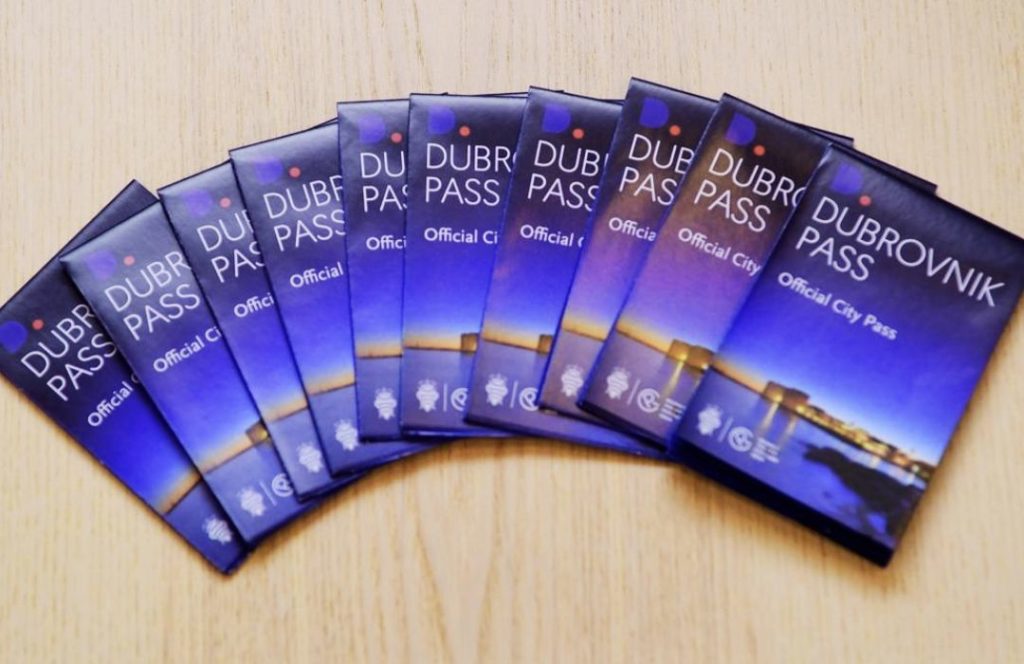
With the Three-Day Dubrovnik Pass, you can take unlimited rides on local public transit around the City of Dubrovnik for 72 hours (the bus card becomes valid when activated on a bus but has no time limit).
Similarly, with the Seven-Day Dubrovnik Pass, you can travel on public transportation unlimited time for 168 hours through the city of Dubrovnik.
What are Other Dubrovnik Pass Inclusions?
The Dubrovnik Pass also lets visitors take advantage of special offers and discounts while visiting culture and heritage attractions not included in the free admission. Discounts available are dependent on what type of Pass you buy. The 7-day Dubrovnik Pass has the largest discounts.
Good to Know
Besides discounts on cultural attractions, Dubrovnik Pass holders can get discounts at local businesses such as restaurants, bars, entertainment venues, theater tickets, massages, walking tours, boat cruises, jewelry, and souvenir shops.
Some local businesses give discounts split into different categories, but check the complete list on the Dubrovnik Pass website.
Will Dubrovnik Pass will save me money?
Now that you know what the Dubrovnik Pass is, what it includes, and how much it costs, the next step is to decide whether it is a good value for the available time. Here are steps that will help you determine if it’s worth it.
- What attractions do you want to visit?
- How many days do you need to see all the included attractions?
- How does your total cost compare to the cost of the Dubrovnik Pass?
Step 1: Decide what attractions you want to visit.
Start with listing all the attractions you want to visit during your time in Dubrovnik. Try to devise a realistic list based on the amount of time you’ll be staying in Dubrovnik, as you don’t want to spend your entire trip going from attraction to attraction.
Next, check the entrance fee for each online or a recent guidebook. Finally, add up the costs to come up with a total and compare it with the most appropriate Dubrovnik Pass pricing.
Example A: Let’s say I wanted a short stay in Dubrovnik to just see the main attractions in Dubrovnik’s Old Town, like City Walls (€40), Rector’s Palace (€20), Archaeological Exhibitions, Ethnographic Museum, Sponza Palace, Franciscan Monastery(€6) but also want to visit and relax on Lokrum Island (€26).
Tip
If you aren’t purchasing the Dubrovnik Pass you should buy the Dubrovnik Museums tickets to visit the main museums. They include a single entry to each of the following museums: Cultural History Museum in the Rector’s Palace, Maritime Museum in Fort St John, Ethnographic Museum in the Rupe/Holes granary, Archaeological exhibitions, House of Marin Drzic, Dubrovnik Natural History Museum, The Museum of Modern Art Dubrovnik, Gallery Dulčić Masle Pulitika, Studio Pulitika. Adults tickets are €20; children’s and students’ tickets are €8.
I also want to use the public busses (€2 per ticket) to reach Old Town from my accommodation on each one of my days of sightseeing.
Therefore, the total normal adult entry fees for all these attractions and bus tickets would be €104.
Example B: Let’s say I have decided to stay longer in Croatia and will have Dubrovnik as my base to visit the region with my rental car.
Among the attractions I wanted to visit covered by the Dubrovnik Pass are the City Walls (€40), Rector’s Palace (€20), Archaeological Exhibitions, Maritime Museum, and Red History Museum(€9), Franciscan Monastery(€6).
On one of the days, I also wanted Cavtat and its attractions: Račić Family Mausoleum, Vlaho Bukovac House(€5), Sokol Fortress in Konavle(€10), and Konavle County Museum(€5).
On another day, I decided to visit Ston walls(€10) and Rector’s Palace Slano(€5).
A boat trip to Mljet Island National Park(€20) is also on my itinerary, along with a ballet show at the Dubrovnik Summer Festival (€26 for a seat).
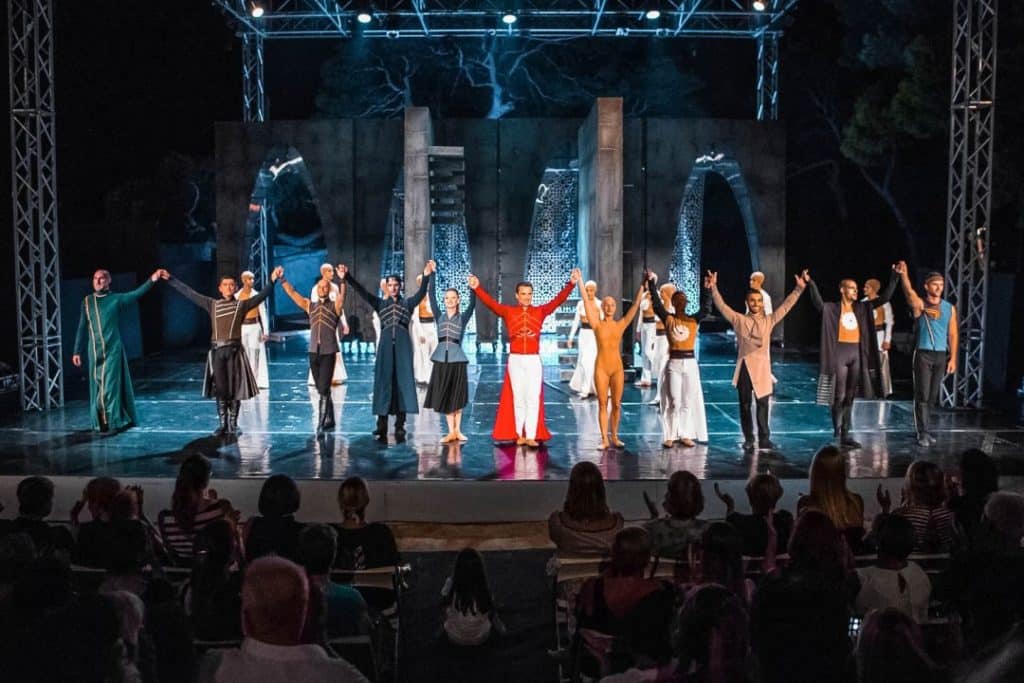
In addition, I want to take the bus (€2 per ticket) on every trip to the Old Town. These attractions would cost a total of €180 for normal adult admission.
Step 2: How many days do you need to visit all the included attractions?
Your next step should be to figure out how many days you want to see all the attractions on your list. Remember not to be too eager, thinking you’ll manage to do the City Walls tour, visit three museums, do an island trip, an aquarium, and a guided walking tour in one day. Instead, also leave yourself plenty of time to just relax on the beach.
Example A: Looking back at the attractions from Example A, we might think that we can probably squeeze all of these attractions in one day since it’s pretty much all situated in the Old Town or next to it. I would still recommend two days to have a bit of leeway and enjoy yourself and Dubrovnik, especially if you are also touring different souvenir shops, local authentic jewelry shops, or tasty ice cream vendors.
This means I would need two days, so a 3-Day Dubrovnik Pass would likely be the best choice.
Example B: The Old Town is one of the first places I want to explore on my first day in the city using the bus even though I have a rental car (parking near Old Town is expensive) and visit the City Walls plus do the guided tour of the city to get myself familiar with the history, and then do some shopping. Here are some recommendations for tours that go on the walls.
I would set out a second day to visit some of the sites in the Old Town included on the Dubrovnik pass (Rector’s Palace, Archaeological Exhibitions, Maritime Museum, Franciscan Monastery). Then, on my way back to the accommodation from the Old Town, I would take a tour of the interesting Red History Museum.
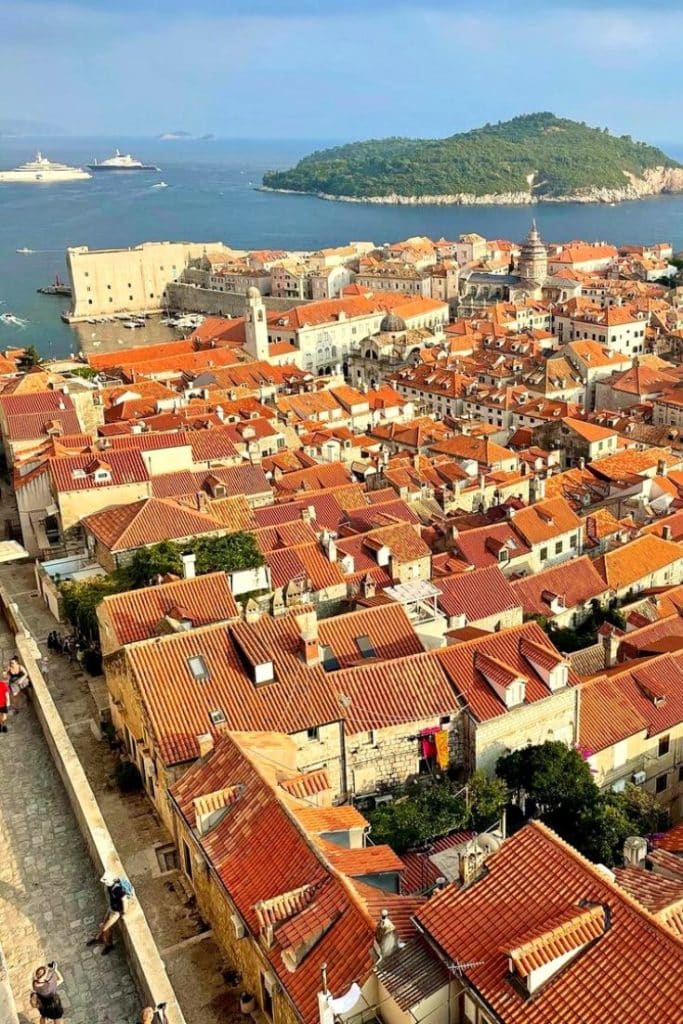
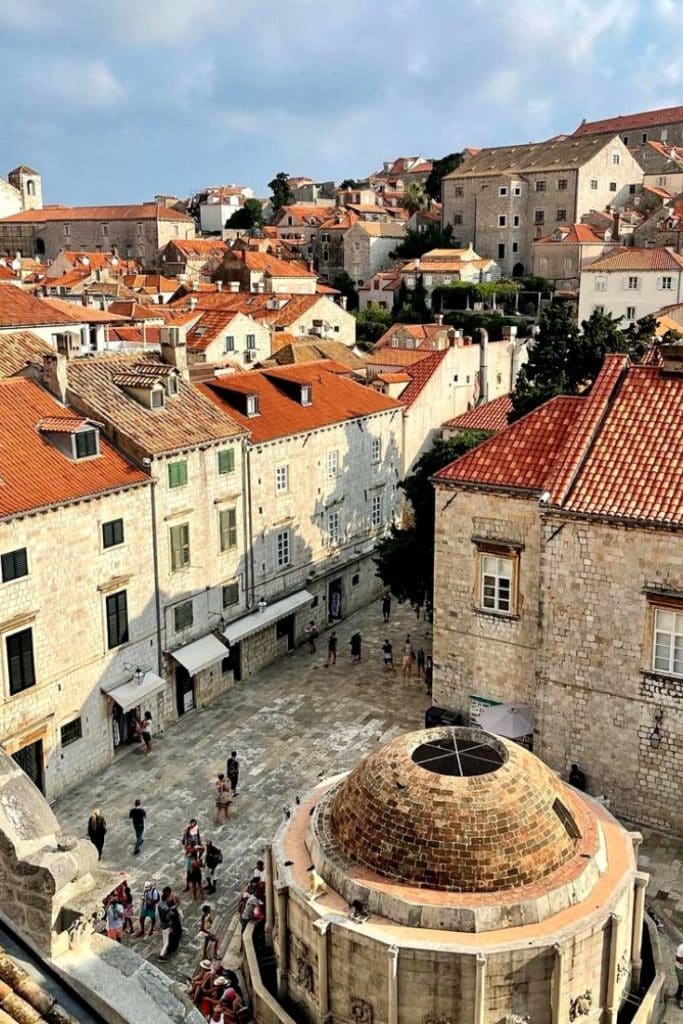
Day 3, I want to visit the charming town of Cavtat and its attractions: Račić Family Mausoleum, Vlaho Bukovac House, Sokol Fortress in Konavle, and Konavle County Museum.
On Day 4, Since I rented a car, I would want to take a short drive from Dubrovnik to the medieval town of Ston and visit its famous Ston walls, delicious wines, and oyster farms. I wanted to stop by the Rector’s Palace Slano on the way there.
The next day, I also want to take a boat trip and visit the gorgeous Mljet Island National Park everyone recommended during my stay.
On Day 6, let’s say I spent my whole day at the beach, and that night I wanted to have a cultural experience and enjoy a Dubrovnik Summer festival drama play on Lovrjenac Fort.
So I wanted to do six days in Dubrovnik; purchasing a 7-Day Dubrovnik Pass would be the best option.
Step 3: Compare your total cost with the Dubrovnik Pass cost.
Compare the total attraction costs to the cost of a Dubrovnik Pass. You should be able to determine your cost savings from this.
Example A: All right, it would cost me €104 to visit all the places on my Dubrovnik itinerary. I think I need two days and the cost of the 3-day Dubrovnik Pass is €50.
Good to Know
However, if I buy a 3-Day Dubrovnik Pass(€50), with included discounts to Lokrum(-20%), and 72-hour buss pass, the grand total would be €66. That is a healthy 36% savings!
So 3-Day Dubrovnik Pass would be worth it to buy in this case.
Example B: It would cost €180 for an adult to visit all the places in Example B without using the Dubrovnik Pass. I think I need six days to see all the attractions I have put on this Dubrovnik itinerary.
Good to Know
The cost of the 7-Day Dubrovnik Pass is €60. With added discounts you can use Dubrovnik Pass for, total cost would be €115. So the cost savings with a Dubrovnik Pass would be €65 for one adult. That is also a 36% in savings!
Consequently, I would save considerable money and would not have to wait in line at attraction ticket booths. In this case, the 7-Day Dubrovnik Pass is a very good value and well worth the money.
Last but not least, choose what you need to purchase.
Based on the information you calculated, you can determine whether purchasing separate attraction tickets or the Dubrovnik Pass would make more sense.
In Example A and Example B, I would want to purchase the Dubrovnik Pass as it represents significant cost savings.
Tip
Even if you are in Dubrovnik for just a few hours and plan to visit the City Walls, buying a Daily Dubrovnik Pass is smart since the price is the same, and you get free entrance to museums and a 24-hour bus ticket.
Basically, buying a Dubrovnik Pass is worth it in any scenario where you plan on visiting the Walls. And the price difference between the Pass types is only €10. This is without even accounting for other potential savings with other local businesses you can make while visiting the city.
For example, you can save more money if you visit restaurants that give discounts to Pass holders and go on discounted guided walking tours or island boat tours.
Can you buy the Dubrovnik Pass online?
Unlike its predecessor Dubrovnik Card, which you had to buy physically in hotels and agencies, the Dubrovnik Pass can be purchased online.
Tip
When you buy a Dubrovnik Pass, you receive a unique QR code that you can keep on your smartphone. You can install the Dubrovnik Pass app on your phone to make your visit to Dubrovnik attractions more convenient. If you prefer a physical copy, you can also print it and use that to pick up tickets or enter institutions.
Dubrovnik Passes are activated after the first visit to a cultural institution or after purchasing a bus ticket for public transportation within the city. Every cultural institution included in the Pass allows you a one-time visit, so, for example, you can only visit the City Walls once. You cannot return the next day with the same Pass.
Tips on how to get the most out of your Dubrovnik Pass
It’s best to plan your itinerary before coming to Dubrovnik. Make sure you know which attractions are included with the Pass and which ones you plan to visit before deciding if the Pass is for you.
Notice
It’s important to remember that once you first use the Pass at the attraction or pick up the bus tickets, the time countdown begins, and it is only for good for the next 24 hours, 3 or 7 consecutive days.
If you’re staying longer in Dubrovnik, you’ll get the most out of the Dubrovnik Pass because the longer the time you have, the greater the value you’ll get. In a family of three, even if each member saved only €10, €30 could be saved, so the savings multiply with the number in your group.
Tip
Prioritize attractions you want to see with high ticket costs like the City Walls to get most value for money if your Pass does not cover the full duration of your stay in Dubrovnik.
When coming up with your itinerary for your Dubrovnik vacation, consider attractions not covered by the Dubrovnik Pass, such as taking the Dubrovnik Cable Car, Lokrum Island, etc.
Installing the Dubrovnik Pass app on your smartphone is a good idea. You can also find information about discounts and useful things that can help you on your trip, along with all the information about the attractions covered in the app.
Set aside enough time to visit the cities attractions you are most curious about. Since you can see each attraction only once, ensure adequate time before entering.
The Pass may not be the best value for children. Some spots frequently get reduced ticket prices anyway, while other places give free entry to children. So if you are traveling with kids, check out the prices before purchasing a pass. For example, Dubrovnik City walls have a €15 ticket for children under 18 years, which is great if you are planning to visit just the walls and avoid buying a €35 Daily Pass.
Try to avoid forcing yourself to see everything in one day. It is not uncommon for people to use their Daily Dubrovnik Passes, go down the list of attractions, visiting as many as they can in a day. As frequent travelers, we also desire to see everything when visiting a new destination but have learned to pace ourselves to not be energy drained the second day.
My experience using Dubrovnik Pass
As a matter of fact, I have visited Dubrovnik many times. Then I would have used the Dubrovnik Card to see the Walls and other museums I like to check every time I am in the city.
Dubrovnik Card was replaced by Dubrovnik Pass in 2022 as a mobile app product. Except for the pickup experience, the Pass generally works the same way. I got on the Dubrovnik Pass website, picked the Daily Pass, made an account, and filled in my card payment info; voila, I had my Pass and instructions.
After you purchase it on the website, the pass is immediately available for printing and download as a pdf file.
During my 1-day Dubrovnik Pass period, I visited five attractions covered by the Pass! Even though I usually cram on my trips as much as possible, I was a bit pressed for time. So I got up early to grab my bus card at Lapad Libertas Point of Sale. Then, I used my bus card to get to Old Town, where I stayed until evening, visiting attractions, having lunch, and shopping.
There were some attractions I spent a lot of time visiting (such as the Rector’s Palace and Museum of Modern Art), but others I visited were much shorter visits, either because I’d seen them several times already (City Walls and Franciscan Monastery), or they were smaller sites that only took about 30 minutes to explore (for example, the House of Marin Držić). I also used the time to mix attractions not included in the Pass, such as the Cable Car.
Obviously, my review reflects my experience at the time I used the Dubrovnik Pass. The Pass allowed me to visit less crowded attractions such as the Natural History Museum, which I may not have considered seeing if I had to pay for a separate ticket.
As far as cost savings, by using the Dubrovnik Daily Pass, I have paid €40 for the Pass instead of €71, which would cost me if I paid every ticket separately.
I highly suggest that all travelers to Dubrovnik consider buying the Dubrovnik Pass. It will be a good value for money even for the average first-time visitor who plans to spend no more than a day sightseeing.
However, the Dubrovnik Pass is not a good fit for all visitors, and travelers on a budget can easily spend a day or two visiting Old Town and the rest of Dubrovnik and spend little to no money on sightseeing.
I like that the Dubrovnik Pass also includes discounts with local businesses like guided walking tours, cruises, restaurants, and car rentals.
These great experiences allow the option to see things other than museums, art galleries, palaces, and churches. So check it out and see if the Dubrovnik Pass is a good fit for your Dubrovnik visit.
Frequently Asked Questions
Is Cable Car included in the Dubrovnik pass?
No, Dubrovnik Pass does NOT include tickets to the Dubrovnik Cable Car. If you want to use the Cable Car to visit Mount Srđ, we recommend booking your ticket online in advance as this is a very busy and popular attraction.
Is it possible to visit the same attraction more than once with the Dubrovnik Pass?
The Dubrovnik Pass website states that you have a one-time visit to each cultural institution, meaning you can only visit each attraction once.
Does Dubrovnik Pass cover the trip to Lokrum Island?
The ticket for the boat trip that regularly goes from the Old Port to the Lokrum Island Nature Reservation is NOT included in the Dubrovnik Pass. The cost of the ticket is €26.
Can I buy Dubrovnik Pass somewhere, not online?
If you don't want to buy Dubrovnik Pass online, you can buy the physical version at these locations throughout the city.
Can I get the DuPass bus tickets on the bus?
From my latest experience, you can. I showed my Dubrovnik Pass QR code to a bus driver, who scanned it, saw it was active, and printed out a physical bus ticket that was valid for 24 hours; on another occasion, they just waved us through to the back of the bus.
Are bus tickets to Cavtat included?
Although the 7-Day Dubrovnik Pass includes free admission to attractions in Cavtat and Konavle, it does NOT include tickets to Cavtat. You can buy bus tickets to Cavtat on the bus or at the main bus station in Dubrovnik.
Sonja is a travel writer and cultural heritage enthusiast based in Dubrovnik. With years of experience exploring Croatia's historic sites, she shares insider knowledge about the region's art, architecture, and traditions.

